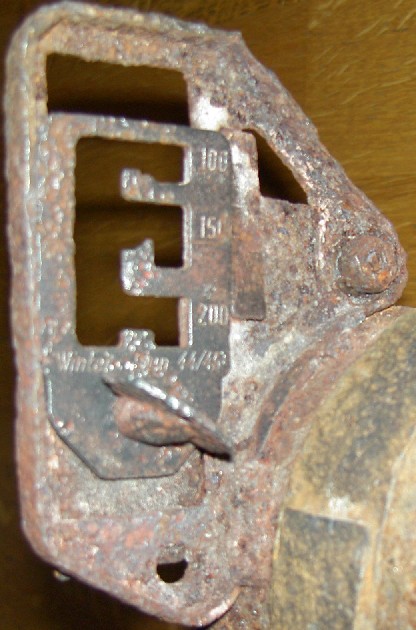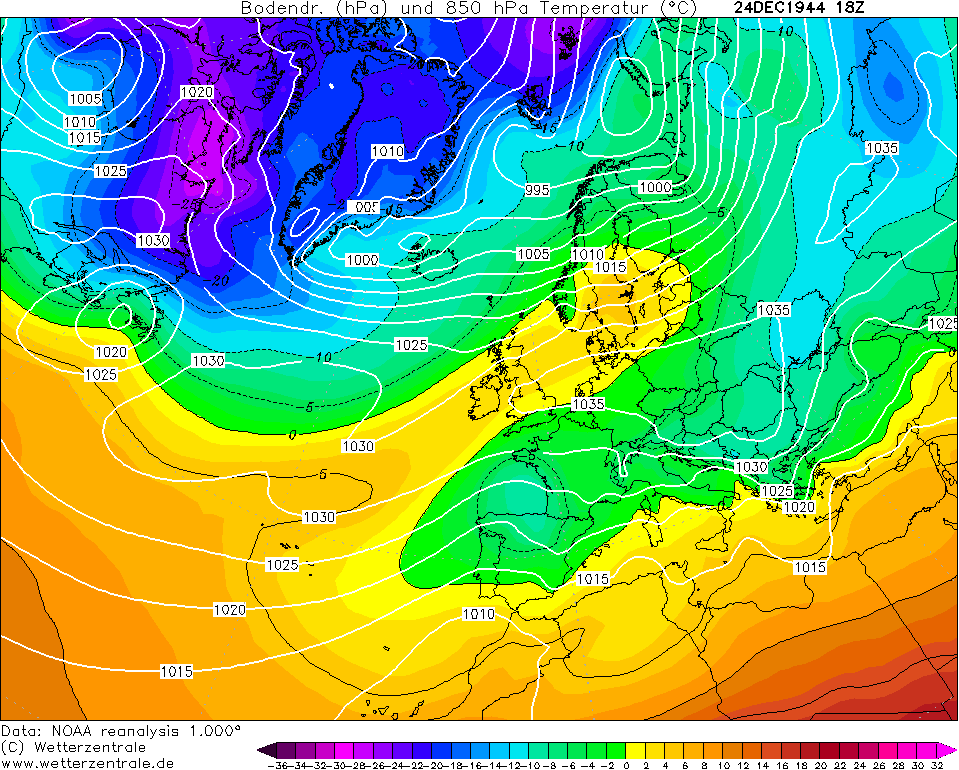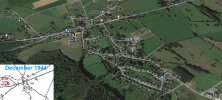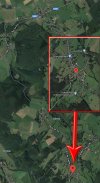The maximum effective range of a Panzerfaust was .... and the Panzershreck 150-meters.. If the tank company sited and fired upon the infantry formation at 200-meters, there was no way for the anti-tank company to reach them with their weapons.
Yes
and no.
In general, The Raketen-Panzer-Büchse
54 (Panzerschreck with shield) had an effective range of 100 - 200 meters, under optimal temperature conditions, depending on the grenade version.
Many websites/online sources just indicate a range of "100 - 200 meters" to be on the safe side, because ranges varied greatly, due to the different versions (
3) of grenades produced/used during different seasons of the year (see below).
Gordon L. Rottman insists on a
general range of "200 yards" (182.88 meters) in "
World War II Infantry Fire Support Tactics" (page 56, 2016, Osprey Publishing), but I suspect that he trusts German documents that (just) announced the production of the
4992 grenade and that he assumes that these grenades were actually produced, there.
Since the 4322 was mass produced and available in high numbers, such generalizing statement appears to be pretty daring, tbh.
German publications of the 70s + 80s indicated exactly that range (180 meters) as optimal/effective range for the
4992 (not for the 4322) which was (supposed to be) produced for the 54 and the shortened/improved version, the RPzB 54/1.
These publications also stressed that the 4992 production turned out to be tricky,
13% of the first batches had to be be rejected by the Waffenamt and/or by the troops, supposedly. The
R.Pz.B.Gr. 4992 was pretty heavy (
11 kg) and contained more explosives, which explains the lowered range (see 4322 below). The 4322 weighed
3.25 kg only.
Recently, collectors + private researchers tend to consider the mass production of the 4992 to be a myth, only one picture exists (field manual) + no collector or researcher ever came across 4992 crates or stickers (let alone 4992 grenades), so serial production may not have materialized or had only delivered
very low output numbers.
The
54/1 was an improved version: The tube was shortened (weight reduction: 2 kg) and the sight improved. Both, the improved sight on the 54/1 and the front sight on the 54 could be used as range finders.
Some private researchers/collectors claim/suspect that the 54/1 tubes were in fact returned/or rejected 54 tubes which were then modded to the 54/1 standard. There are some indicators that seem to kind of support that claim (sloppy reprocessing/workmanship, parts being mounted in varying spots, other notable details) at first glance, but the differences + the varying quality of appliances could have been a result of the German attempt to compensate factory losses. Less experienced workers/slave workers, missing parts etc. could have caused the differences, means they could have been "local flavors" caused by local factory conditions and part situations, instead of modded leftovers/returns (54 tubes).
HASAG started to lose its Polish slave worker factories in early 1945, which the company had "acquired" in 1939. After the Russians had crossed the Vistula river, HASAG had lost all of its 3 armament factories in Poland (late January, 1945). So it's also possible that the differing 54/1 layouts had been the result of hasty assembly during the plants' last days in Poland (if they ever assembled 54/1 tubes) or of the ever increasing lack of spare parts (which might have been produced locally).
The mountable sight plates that came with the final version of the 4322 grenades had the numbers 100, 150 and
200 engraved (which indicated the effective ranges), and a "
Wintermunition 44/45" engraving at the bottom:
Despite the plans to introduce the 4992 grenade, the
range of the last version of the 4322 grenade had been significantly
improved (see below), already, + the range increase then forced the manufacturer to produce these new sight plates.
In order to ease adoption/acceptance and decrease confusion, every 2nd crate holding the improved 4322 grenades came with a set of front/rear
sight plates (picture above: front sight plate). The sight plates were also needed to adjust the aim for either winter or summer temperature conditions and - with the final version of the grenade - to adjust for the range increase, of course.
The crates contained a leaflet that reminded the soldiers to put on the new sight plates and to adjust them according to the current (outdoor) temperature (means to one of 2 predefined sight positions - for winter + summer - which were marked by 2 dashes on the sight plate; the engraved "winter dash" can be spotted on the pic above, just below the number 150).
If I am not mistaken, previous sight plates had 2 dashes (winter/summer aim) and 50, 100 and 150 increments, I can't verify the previous range engravings atm, tho).
In general, Panzerschreck grenades came in 2 seasonal "flavors", a summer and a winter version (which contained differently mixed propellant charges optimized for each season). A Winter 44/45 sticker stated:
"Gute Treffaussicht besteht
bei +25° C bis 200 m,
bei 0° C bis 150 m,
bei -25°C bis 100 m."
"A good chance to hit exists
at +25° C up to a distance of 200 meters,
at 0° C up to 150 meters,
at -25°C up to 100 meters."
Reminder: Each value indicated the end of the
optimal range.
Higher ranges (with reduced hit rates) could be achieved, ofc.
The RPzB 54 could fire the improved 9322, too.
The tube's predecessor (without shield + "54" designation) was only produced for evaluation on test ranges and for select units to test them under combat conditions.
For instance, 2 Coys of Zerstörer ("destroyer") Bn 477 (an AT Bn) were equipped with Panzerschrecks in October 1943, while the Bn's 3rd Coy was still equipped with "heavy Pak" guns. A revised version of the grenade (4322) delivered to the units in December 1943 performed better in winter conditions eventually.
The Bn's CO (v. d. Planitz) then described the hit ratio with that experimental ammunition to be "
satisfactory" "...
up to a range of 100 meters" (
cold weather), in a report filed on March 14, 1944.
The summer 44 production version allowed for ranges of up to
150 meters in warm/fair weather.
According to a leaflet that was dated April 1, 1944, and which was issued to all supply depots and resupply handlers that received grenade deliveries, the rockets contained the following amounts of explovices:
- hollow-charge explosives: 0.450 kg,
- fuze explosives: 0.007 kg,
- propellant charge: 0.175 kg,
- total weight of explosives + propellant charge: 0.632 kg.
This might have been the revised "Wintermunition 43/44", the first production version.
The leaflet carried the official approval serial number (serially numbered by the Waffenamt, "Merkblatt geh. 28/1") + the rating "geheim" ("secret").
Specified temperature ranges:
- The first 15,000 grenades were restricted to use between -10 and +30° C + were not meant for combat,
- the first production version "Wintermunition 43/44" was certified to be used at temperatures from -40° C to +30° C and its rocket motor labeled "Arkt 43/44".
- The second version, the Sommermunition 1944 was meant for use between -5° C and +50° C.
The
last version of the
4322, the "
Wintermunition 44/45" grenade (the rocket motor was labeled "Arkt 44/45" - Arkt for "arktisch" or "Arktik" = "arctic"), had received a redesigned rocket motor that sported a range of 200 meters in warm weather, officially (my guess: between 17 - 25°C).
- This 3rd version could be used at temps between -25° C (some surviving stickers insist on -20° C, maybe misprints) and +25° Celsius, and could be fired with both tubes, the 54 + the 54/1.
The major changes in its rocket motor:
- use of a solid (one-piece) fuel rod (one modern picture of an original solid rod exists, a collector could verify this) instead of the 7 smaller separate fuel rod pieces like in the previous versions, which then allowed for an optimized combustion that upped the rocket's start velocity (thus higher range + improved accuracy),
- the ignition charge at the top of the fuel tube had been enlarged which also helped to improve combustion.
These somewhat picky temp ranges meant that a grenade that had heated up in the sun could become so unstable that it was dangerous to operate the weapon.
Accordingly, the manual recommended to let it cool down in a shaded area before operating it. Low temps (below the spec. range) had to be avoided too, the manual recomm. to get the projectile to a warm place to bring its temp. back to the specif. range. The crates were usually stored in shaded/heated places. That said, the projectiles turned out to be pretty finicky.

I am guessing that the explosives' total weight increased to around 0.66 kg (some German sources keep indicating this as general weight), which sounds reasonable for the last version, b/c the size of the fuze charge had been increased + because the solid rods were used. The
improved 9322 became available in time for the winter season in 1944, afaik.
There is a witness account of a Swiss Army officer - who conducted tests with a post-war (Swiss/French?) derivate of the last Panzerschreck version on a Swiss test range - floating around and which I read years ago. The officer had fired a number of grenades + established that a range of
400 m could be achieved by using a pretty high arch (the Panzerschreck's grenades had a curved flight path anyways, so an exper. soldier then had to use skill/estimation to score above 200 m (in warm weather + when using the 44/45 version).



